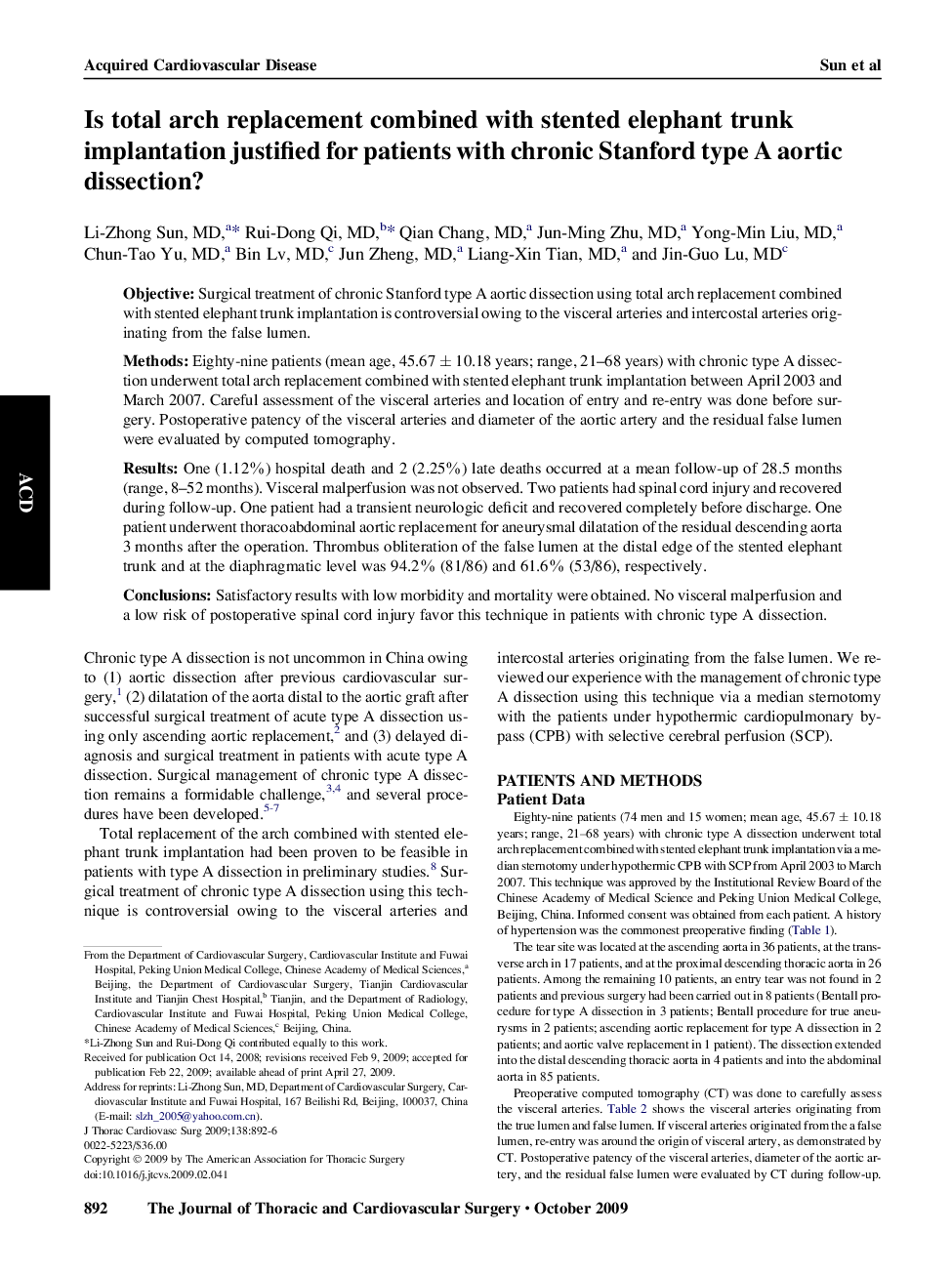| Article ID | Journal | Published Year | Pages | File Type |
|---|---|---|---|---|
| 2982088 | The Journal of Thoracic and Cardiovascular Surgery | 2009 | 5 Pages |
ObjectiveSurgical treatment of chronic Stanford type A aortic dissection using total arch replacement combined with stented elephant trunk implantation is controversial owing to the visceral arteries and intercostal arteries originating from the false lumen.MethodsEighty-nine patients (mean age, 45.67 ± 10.18 years; range, 21–68 years) with chronic type A dissection underwent total arch replacement combined with stented elephant trunk implantation between April 2003 and March 2007. Careful assessment of the visceral arteries and location of entry and re-entry was done before surgery. Postoperative patency of the visceral arteries and diameter of the aortic artery and the residual false lumen were evaluated by computed tomography.ResultsOne (1.12%) hospital death and 2 (2.25%) late deaths occurred at a mean follow-up of 28.5 months (range, 8–52 months). Visceral malperfusion was not observed. Two patients had spinal cord injury and recovered during follow-up. One patient had a transient neurologic deficit and recovered completely before discharge. One patient underwent thoracoabdominal aortic replacement for aneurysmal dilatation of the residual descending aorta 3 months after the operation. Thrombus obliteration of the false lumen at the distal edge of the stented elephant trunk and at the diaphragmatic level was 94.2% (81/86) and 61.6% (53/86), respectively.ConclusionsSatisfactory results with low morbidity and mortality were obtained. No visceral malperfusion and a low risk of postoperative spinal cord injury favor this technique in patients with chronic type A dissection.
